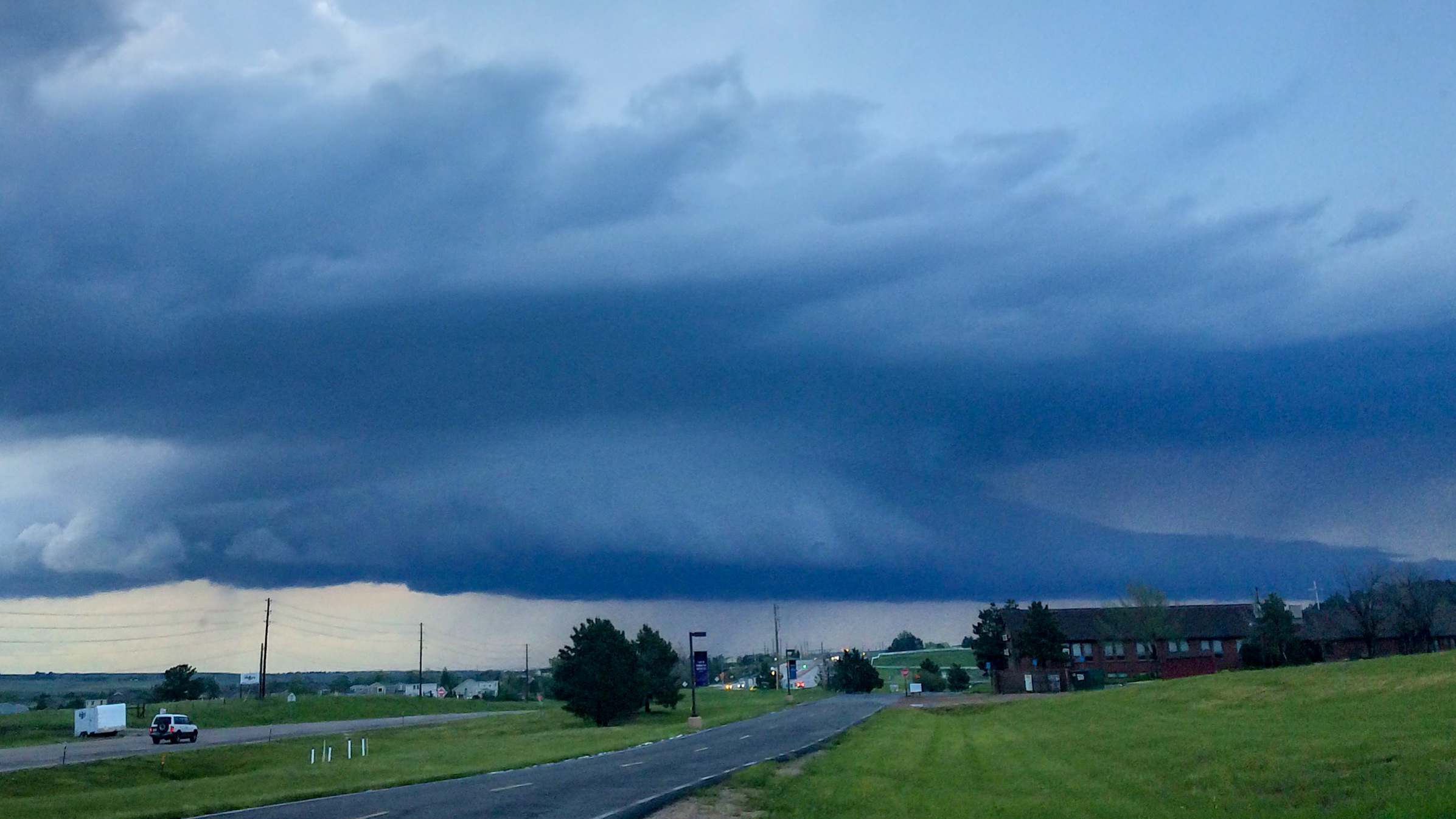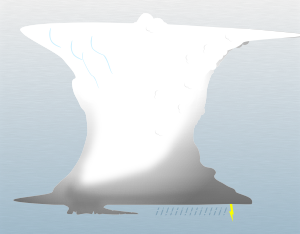Description & Characteristics. Translated from latin meaning tail, the ‘cauda’ cloud feature is found only in the cumulonimbus cloud type. No other cloud type besides a cumulonimbus cloud can be paired with a cauda cloud feature. Cumulonimbus cauda clouds are more popularly known as tail clouds, and generally are found in especially strong thunderstorms accompanied by a wall cloud. The proper cloud classification abbreviation for this cloud type and feature is ‘Cb cau’.
If you see a cauda cloud formation, you’re probably either in the wrong place at the wrong time, or you’re a storm chaser. Because of that, cauda clouds are uncommon, and are usually a good sign of severe weather and are almost always associated with well organized storms. The cauda cloud feature is a type of inflow band that generally points to the wall cloud (murus cloud feature).
When identifying a cauda cloud, it’s easy to confuse them with the flumen cloud accessory, better known as a beaver tail. While both are inflow band features, the cauda cloud feature is attached to the wall cloud, while the flumen cloud accessory can be significantly larger, feeding into the updraft base of the storm, and a bit higher in altitude.


